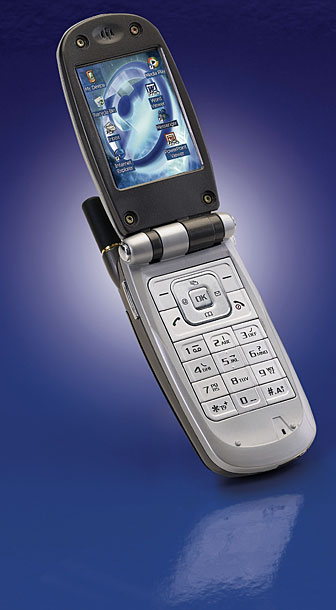
Calypso Wireless was honored last week with Frost & Sullivan's Wi-Fi Technology of the Year Award for its revolutionary Automatic Switching of Network Access Points (ASNAP) technology that enables seamless roaming between GSM-based cellular / GPRS and 802.11-based Wi-Fi networks. Calypso's ASNAP technology was named the best solution offered for allowing mobile users to seamlessly roam between Wi-Fi hot spots and traditional cell towers.
"Being recognized as the Wi-Fi technology of the year is the culmination of years of effort by many dedicated visionaries who saw the future of the cell phone industry. Our duel mode GSM/Wi-Fi phones are the wave of the future for cell users in the Wi-Fi environment. We are so proud that the hard work has paid off and that we are on the verge of providing mobile carriers and users with the type of product that enhances their mobile capabilities," said Calypso's Michael Pizzi
Calypso C1250i dual mode WiFi-GSM-GPRS VoIP cellular phone that runs on Intel PXA series application processors and Microsoft WinCE 5.0 and roams between these two networks is beneficial for data-intensive applications such as mobile video and data file transfers that leverage the high-data rates of Wi-Fi networks.
Calypso's Automatic Switching of Network Access Points (ASNAP) technology represents the convergence of cellular and Wi-Fi, enabling mobile devices to switch seamlessly between cellular and wireless IP networks through wireless local area network (WLAN). ASNAP also assists mobile carriers in achieving an efficient allocation of network resources by freeing cellular spectrum space for data and voice transmission, and increasing the availability of bandwidth for other users.
ASNAP allows cell phones and other mobile devices to automatically detect an available WLAN and then switch between the signals from a GSM/GPRS or CDMA cellular tower to a short-range broadband network such as cable with Wi-Fi. The wireless customers remain connected to the GSM/GPRS or CDMA network until their cell phone detects and switches to a Wi-Fi network, at a speed of up to 11 Mbps.
Switching between cellular and WLAN networks enables movie-quality, real-time videoconferencing through cellular phones, fast pictures and video clips with data messaging and audio, and two-way data messaging.